The Maw: Systemic Horror in Little Nightmares
By gamer_152 2 Comments
Note: The following article contains major spoilers for Little Nightmares, Little Inferno, and the films The Platform (2019) and Snowpiercer. It also makes multiple references to child abuse and suicide. If you are struggling with suicidal thoughts, contact a suicide prevention organisation near you. For those in the US, you can reach the Suicide Prevention Lifeline at 1-800-273-8255 or find them online at suicidepreventionlifeline.org. If you are in the UK, you can call The Samaritans on 116123 or visit their website at www.samaritans.org.

"I am a stomach, hunger incarnate.
When I'm hungry, I forget my lunch used to be a person.
When the hunger's bad, I forget I used to be one too".
-Olivia Moore, iZOMBIE (S01, E03).
In horror, there is always a threat, and in the vast majority of horrors, that threat is an antagonist, a group of antagonists, or a space. Think Michael Myers in Halloween, the Gremlins in Gremlins, or the house in The Haunting of Hill House. By pinning the horror down to individuals or localised areas, stories can introduce a personal element and exploit our fears of the people and places that could harm us. However, the entities that could damage our wellbeing aren't limited to people or places. So, why should our horror be?

Increasingly, we are disturbed, not because of any anthropomorphic danger, but because we are caught in powerful and incomprehensible systems much larger than us. Those systems can be social, institutional, technological, or of some other type. The law, patriarchy, the military, and educational institutions are just some forces that can work to objectify and disempower us. Classic works of the 20th-century such as Franz Kafka's The Trial, Margaret Atwood's The Handmaid's Tale, or Pink Floyd's The Wall play on that powerlessness.
Tarsier Studios' 2017 game, Little Nightmares, is also about the overlap of systemic influence and personal endangerment. However, it is quite coy about that being its central theme. Take a Writing 101 course, and you will learn that the first couple of chapters of your story are where you nail down the basics of your world and your characters' goals. Such exposition set up stakes, gives a context for plot events, and actualises the setting and characters. Sewing these seeds is crucial to get plot-driven and character-driven narratives rolling. However, it is not vital for more aesthetically-driven experiences.
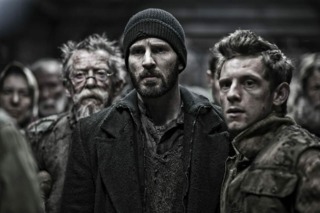
Little Nightmares' subject matter, setting, and structure are comparable to that of Bong Joon-Ho's 2013 film Snowpiercer, in which a community endlessly travels a frozen Earth via a train. The train's carriages are arranged hierarchically, with the rich nearer the engine and the poor further from it. Our perspective follows the rebellious underclass of the society as they surge towards the locomotive. Each carriage reveals a new societal stratum, so we start with a bare understanding of the politics and dynamics of the world and fill in that picture as the characters progress.
Like Snowpiercer, Little Nightmares takes place in an artificial, modular structure and chugs along with a focused, forward momentum. The game is a puzzle-platformer, and in classic form, we move from left to right through its environment. As we push through that space, the game travels this gradient from the abstract and aesthetically-driven to the concrete and detailed. Like the carriages in Joon-Ho's film, every zone in Little Nightmares has something new to say about the purpose of the place the characters inhabit and their role in it. However, where Snowpiercer gives us the basic premise of its world at the ticket desk, Little Nightmares is more enigmatic than that.
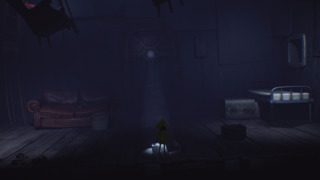
In Chapter One of the game, we can see some wisps of accommodation: there are sinks and doors and cribs. However, much of the world is a patchwork quilt of grey cubes, cages are discarded haphazardly throughout the environment, and disembodied eyes can petrify us with one withering glance. In this and all subsequent chapters, a swaying motion rocks the camera. If we die, we jolt awake at the last checkpoint. This design and the game's title suggest that Little Nightmares maroons us in a dreamscape rather than having us inhabit any physical place. That turns out to be untrue.
That Little Nightmares' world is material is a fundamental detail, and yet, the game plays something even that foundational as a twist. And even once we learn that we're occupying a solid reality, we don't know if there's anything outside the level's neutral backdrop. This setting's systemic nature will not reveal itself to us until much later. The game is a narrow spotlight that slowly broadens. With every new inch illuminated, it brings a creeping understanding of the scale and cruelty of the operation ensnaring us. As it teaches us about that system, it also teaches us how cycles of violence perpetuate.

As the player, we control "Six", a child who wears a yellow raincoat, obscuring their face, and the construct they find themselves trapped in is called "The Maw". Little Nightmares' camera sits far back from the protagonist, making them a spec of dust on the floor. This framing could work against it because a distant camera downplays the scale of objects. Think about how two skyscrapers on the horizon are never as imposing as two skyscrapers in front of you. However, the setting's adults are about five protagonists high, and they built everything from chairs to bookcases with themselves in mind. At each turn, The Maw's design signals that it is not made for Six, giving it a casual hostility.
By oversizing the environment, Little Nightmares keeps its setting intimidating and us feeling like children within it, even with a vast void of space between the camera and character. While its contemporaries in the genre might spook you with the monsters hiding under your metaphorical bed, this is a game that frightens you by having you hide under the monster's bed. Its challenge largely derives from overcoming that inaccessibility of scale: Working out how to open a door when you can't reach the knob or climb onto a table when you're the size of a mouse.
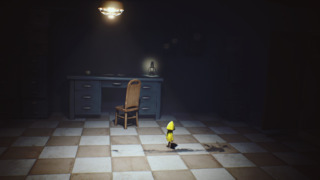
Six's stature is symbolic of their insignificance within The Maw. As we'll later see, its system considers them just more grist for the mill. But Six's height does come with some advantages. It allows them to squeeze into places impossible for the giants to fit into, and the game establishes that they're tenacious enough to leverage that advantage where other characters can't. Down in the dirt, you can find "Nomes", skittish and helpless creatures who run and hide at the first sign of movement. Six is in the same position but works out how to overcome and escape rather than flee and hunker down. The first moveable object we encounter is a chair that someone has climbed onto and used to hang themselves. Where that character saw the seat as a tool to commit suicide, Six uses it to free themselves, treating it as a makeshift step.
In this opening chapter, the living are few and far between, and enemies include those eyes that turn Six to stone. The scenes remind me of a naughty kid trying to sneak out of their room at night, avoiding their parents' gaze. Upon completing the first level, an achievement informs us it was called "The Prison" before a creature traps us in a cage and drags us off. The second chapter is "The Lair", and with it arrives a villain: a grey-skinned humanoid with old, ill-fitting clothes, and a blindfold. The Lair's guardian snatches us up whenever we are within reach, and that's a wide radius as his arms are more than twice the length of his torso. The most memorable encounter with the monster comes at the end of the stage. We clamber around a room adjacent to him, and his arms snake across the surfaces, trying to grab us.
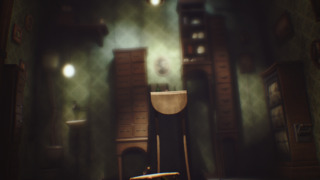
The Lair's decor is that of a cluttered early to mid-20th-century western home. Cages like the one that held us litter the area, and we find a few toys underfoot. The environment also hosts a warehouse-sized pit of shoes, and when we turn on the warden's TV, it's set to a channel playing a nursery rhyme. The environment caries with it the eerie insinuation that the creature's job is to catch and imprison children, but that, for whatever reason, many of those children have gone missing or maybe even died. This could be why the monster has so many loose possessions like the shoes. Remember the micro-story about a child's death:
"For sale: Baby shoes, never worn".
The Level Two antagonist bears the markers of an elderly man who aims to keep children locked in his house and mistreat them; his invasive hands suggest sexual abuse. Six fits the profile of a neglected child: We never see an adult help Six with anything, and that includes staying fed. Once in each chapter, the protagonist suffers painful hunger pangs and has to scavenge for morsels of food.
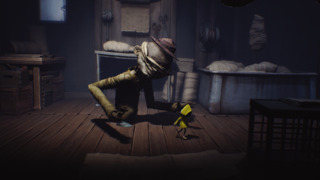
There is another consistent theme here. The boss wants to own this child, their design emphasises their hands, and they spend much of their time rifling through an excess of belongings. And look at what happens if they catch us. In most stealth horror games, if we lose a chase with the enemy, we're remorselessly eviscerated, and the camera is showered in gore. Yet, if The Lair's patrolman catches us, the camera simply fades out on them holding us. The stage considers being possessed a fail state in itself. And this is the consistent fixation of the antagonist: they are all about owning things, holding them; possession. We beat The Lair when we crush the gatekeeper's head under a metal door. We lure him into that trap by exploiting his desperation to manhandle Six.
In the first two chapters, we see body bags and corpses swinging from the rafters. In the third chapter, The Kitchen, there are hunks of meat hanging in the same position, hinting these are all the same objects. The police of this galley are portly chefs wearing grotesque masks and working primarily with meat. If they get their grubby mitts on us anywhere near an oven, then they will carry us in the direction of it. The 72 pt. subtext is that the cooks in The Kitchen prepare human as a delicacy. One particularly sharp example of frame composition in this chapter comes in a room near the end in which we must sneak under some tables. In the foreground, a chef cleaves meat with one almighty fist. It begs us to imagine that if we mess up our stealth play, we'll be the ones feeling the force of the chef's blade.
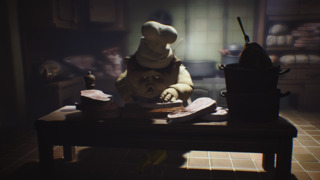
A key dynamic of Little Nightmares narrative is that each new chapter recontextualises the previous. Once we saw The Lair, it became evident that the entrance area was a prison and is maintained by an individual. Now that we have seen The Kitchen, we can contextualise both The Prison and The Lair as part of a more extensive system. The pens from the first two settings hold murder victims, including or exclusively children. Somewhere along the line, those people are killed, and cooks in The Kitchen prepare their meat. However, in solving one mystery about the purpose of The Maw, the game pulls another from its sleeve, retaining our interest.
Like the home of Chapter Two, The Kitchen of Chapter Three, at first, appears to be an ordinary domestic environment. However, it takes on a surreal quality as we discover how much of it there is. The kitchens don't open onto a dining room or a back alley; they just neighbour more kitchens. If The Maw up to this point constitutes a production line for human meat, we must naturally pose the frightening question, "What could need that quantity of people to eat?". Chapter Four puts that mystery to rest with regretable vividness.

After surviving The Kitchen by the skin of our teeth, we find an exit to the structure. Remember, first-time players won't be aware of the runtime of Little Nightmares and may believe this is the ending. Instead, when we climb through a hole in the wall, we're left danging from a ship's hull. The camera's rocking movement wasn't because we're dreaming or a cinematic eccentricity; it was The Maw bobbing about in the ocean. Surrounding us with the sea is an inventive way to rob us of our freedom at the last second. We now know we can potentially leave The Maw; it's not a literal purgatory. However, we can't do it by sneaking out the back door; the only way out will be through. Running that gauntlet will be easier said than done because, in the background, we can see a small army of adults boarding the ship. They're headed to the fourth setting: The Guest Area.
The guests are pudgy, gargoyle humanoids dressed in fineries. The fourth zone has a traditional Japanese style, and most of it is set aside for the patrons to gorge themselves on meat. Early in the level, we wind across their dining counters, and if we get too close, they'll gobble us up. Later in the stage, the visitors wear masks and form an orgiastic wave that rages through the Guest Area. That wave can crush us in its wake.
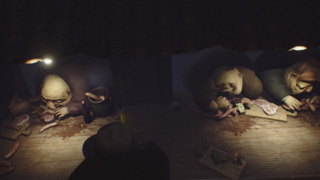
The stealth and puzzle format of the first three levels matches the careful planning that goes into producing a commodity. It also fits with us steadily crawling towards an understanding of what The Maw is. Then, the game suddenly explodes into action play in the fourth stage, reflecting the shock of seeing The Maw's function confirmed and the gluttonous speed with which the guests satisfy their appetites.
To complete our lesson in what binds together a system of violence, we have to meet the woman who runs this operation; that's the item on the itinerary for Chapter Five: The Lady's Quarters. The Lady is a masked geisha-like figure who lives in a home more luxurious than The Lair, but with two peculiarities: all but one of her mirrors are shattered, and she owns about a hundred manikins. The play for this final level returns to a more traditional stealth horror style, but with the subversion that we can fight, and ultimately, overcome the monster. Unlike the broth-soaked workers and guests downstairs, The Lady is disconnected from the production and consumption that maintains her lifestyle.
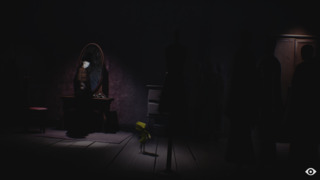
Her violence is indirect, and her attack embodies this: distinct from the other enemies, she doesn't get physical with Six. She tries to kill them by shining a light from under her mask. However, we can take that one unbroken mirror in her parlour and reflect the beam back at her to hurt her. The design of The Lady and her boss fight are bricks in a broader motif that runs through the game.
The Lady has set up her quarters to hide who she is from herself: she has broken the mirrors and shrouded her face. Covering the facial features is a convention in The Maw: The Lair's warden wears a cloth over his eyes, and both the chefs and patrons wear masks. The only exception to this rule is the bare-faced guests eating in the dining area. When the beneficiaries of The Maw cannibalise people, we see their "true faces". For both The Lady and us, seeing who she is is unbearable and blinding. It's enough to destroy her. After weakening The Lady, Six feasts on her body and walks back through the Guest Area swirling with power. They sap the energy from the diners, killing them, and climb a tall staircase towards a light, towering over The Maw that once left them in its shadow.
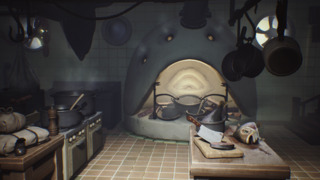
While the direct fixation of Little Nightmares is the production of human meat, we can apply its broad themes of production, consumption, and violence to other dangerous supply chains. Many of the supply chains of the real world are destructive or abusive. If you see a coat hanging on a clothes rack in a first-world country, it may be that a third-world child sewed it together. A corporation may have cut down an acre of rainforest to produce the palm oil in your food product. The diamond in the ring your boss wears may be a conflict mineral, and companies drive down the manufacturing cost of all sorts of goods by forcing the workers who made them to subsist on a poverty wage.
If we buy and use such goods, we usually view them from a consumer perspective, not unlike the guests in Chapter Four who, from an uninformed viewpoint, are just wild about meat. However, in Little Nightmares, we explore the supply chain from the product's perspective (Six), and so, become aware of how the sausage is made, quite literally. The first four chapters of Little Nightmares break toxic supply chains down into four steps:
Observation
As depicted by the game, this step is largely abstract, and during it, the agents of the production line observe the raw material that will become the product. Remember the eyes from Chapter One. This stage is largely comparable to surveying land you might build on or searching out prospective sources of materials.
Possession
You can't process what you can't contain. You must cage your animals, mine your diamonds, whatever you need to do to acquire your materials and stop them from slipping away. Remember The Lair.
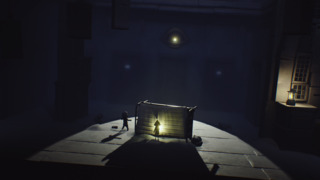
Processing
This step would involve the conversion of animals into food, the cutting of diamonds, the stitching of clothes, etc. The Kitchen symbolises it.
Consumption
The step in which the recipient uses the product. The game depicts it in The Guest Area.
The Maw is a place that consumes people, which is foreshadowed by both its name and the pronounced mouths of all enemies apart from The Lady. At the end of systemic dramas like Little Nightmares, there's usually a demonstration of how to break from, or destroy, a violent system like this. At the close of Snowpiercer, the rebels derail the train; in the third act of The Platform, the prisoners send a message about human perseverance to their captors; as Little Inferno wraps up, we pull ourselves away from the fire. We could interpret Little Nightmares' ending as working on the same principle: Six eats their would-be killer and drains the life of the cannibals. In doing so, they exact revenge on the people who put them through their gruelling ordeal. But I find it difficult to see anything revolutionary in Six's victory lap.
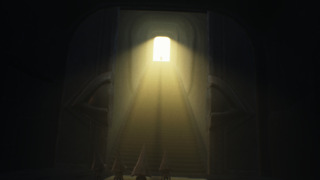
In The Lady's Quarters, the game suggests that The Maw works cyclically. Portraits of intrusive eyes like those in the first chapter adorn the walls. More curiously, one picture in the chambers appears to show a childhood Lady alongside four other children. The story doesn't overtly explain why Six is called what they are. But this picture could be the explanation. Maybe Six is called that because it's their destiny to become the sixth governor of The Maw. We do use numbering schemes to label monarchs (e.g. Henry VIII, Louis XIV). The unidentified children in the picture would be One to Four, The Lady is Five, and Six is Six. Violent usurpation may be how The Maw hands down the claim to the throne. Would it be so hard to believe that an institution violent in its production might be violent in its succession of leadership?
Six could disrupt that cycle, but their actions and the presentation of those actions suggest they don't. At the end of Chapter Four, hunger once again cuts through Six. A Nome offers them a sausage, but they pounce on the poor creature and chew out its innards. It is essential that we understand this is not Six killing to survive. Before this, they have bitten into dead rats to see another hour alive, but here they have an alternative food source and still choose to murder an innocent humanoid.
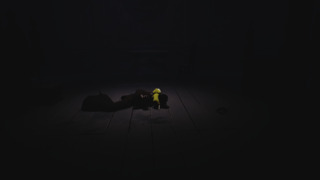
In this moment, Six becomes as aggressive and cannibalistic as the visitors to The Maw. The edges of the screen darken, and we hear the pounding of a heart. That noise sounds again after Six kills The Lady, as they consume her body. In audiovisual language, these events exist on the same emotional branch. It's not framing Six killing The Lady as a virtuous act; it says it comes from the same place in them that killing the Nome did.
The game's best puzzle foreshadows Six's turn to the dark side. In The Kitchen, there is a room with a sausage-making machine and an inaccessible exit halfway up the wall. To progress, we must access the floor above this space, shove some hunks of human meat into the grinder, then go back down and turn the crank. We squeeze a few links out of the mechanism that we can use as a rope to swing into the next room. It's far from unusual for a video game to assign us tasks that feel at odds with the setting's spirit, and Little Nightmares is no exception. However, for most of the game, that's not a weakness. Six is alienated from their environment and has nothing in common with the butchers of The Maw. The grinder room is where that changes, as for the first time, Six becomes the one crushing down other peoples' muscle and sinew for their own uses.
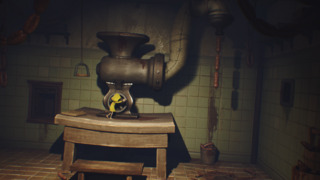
When our protagonist finally exits The Maw, it's not to make a getaway. Instead, in the post-credits scene, they stand atop the structure. They position themselves at the head of the community as The Lady once did. The monarch is dead; long live the monarch. In the closing scene, Six also doesn't liberate the Nomes. As they ascend a staircase into a gold light, suggestive of a passage to elitehood, the lowly Nomes can only watch from the cold concrete below. Little Nightmares doesn't tell us why Six turns against the Nomes and mimics the actions of their predecessors. However, this change in their nature happens after their exposure to The Maw, so I think it's fair to say that it's something that the protagonist adopts from their environment.
Six's corruption is representative of how violence is often cyclical: violence begets violence. People brought up in violent backgrounds are more likely to go on to be violent, and any robust system has a means of sustaining itself. Human meat is not the only product of The Maw; its other product is a leader to maintain it. In this way, the supply chain itself is more in charge than any one figurehead.
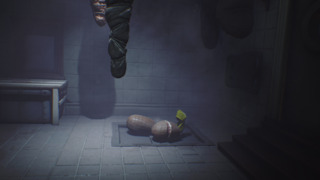
When the antagonist of a horror is a single person or monster or even a place, it's more personal. However, violent systems tend to be more pervasive and encompassing in their threat than one person can be. They affect whole communities, even whole civilisations, and can outlive generations. You can lock up a serial killer, you can escape the haunted house, but how do you destroy a whole industry or a whole legacy of societal exploitation? The most enduring systems of oppression don't just negate attempts to change them but turn their enemies into allies. Thanks for reading.